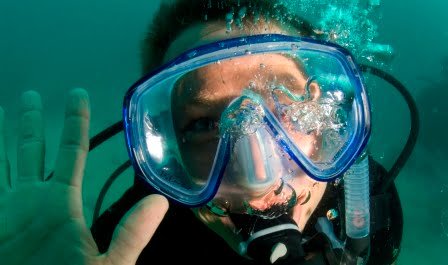How to Choose the Perfect Scuba Mask for Beginners
Choosing your first scuba mask can feel as tricky as buying new shoes—looks can fool you, and comfort means everything. For new divers, the right mask is your window to the underwater world. It can make the difference between a relaxing dive and a miserable one. Many beginners rush this decision, leading to leaky masks, uncomfortable fits, and fogged lenses that spoil precious time beneath the surface. A good mask does more than keep water out; it boosts your confidence, helps you focus on skills, and lets you soak up the magic underwater.
Understanding Scuba Mask Features

Scuba masks come in many shapes and sizes, but they all share core features. The glass lets you see, the skirt keeps water out, and the frame holds it all together. For beginners, focus on:
- Fit and comfort: Every face is different. Some masks suit broad faces, others fit narrow or small ones.
- Quality materials: Look for masks with a soft silicone skirt (the part that touches your face), not plastic or rubber.
- Tempered glass lenses: These resist scratching and won’t shatter like standard glass. Safety comes first.
- Low volume: Low-volume masks sit closer to your face, making them easier to clear.
Small touches—like easy-to-adjust straps or flexible nose pockets—can greatly improve comfort. A good fit matters more than brand or fancy extras.
Fit and Comfort: Finding the Right Seal
A leaky mask will ruin any dive. The secret is a solid, comfortable seal. Here’s how to check fit:
- Press the mask on your face without using the strap.
- Breathe in gently through your nose.
- The mask should stay in place from suction alone.
- There should be no gaps, pinching, or pressure points.
Test a few masks at the shop. Brands shape masks differently, so don’t settle for the first one you try. If it fogs instantly or presses hard on your forehead, keep searching.
If you’re considering buying your own gear, see these tips for diving equipment selection.
Mask Lenses and Visibility Options
Not all lenses are the same. Options include:
- Single lens: Great for a broad, uninterrupted view. Many classic masks use this style.
- Double lens: Fits people with narrow faces nicely and sits closer for easier clearing.
- Side windows: Add peripheral vision, making things feel more open.
Clarity counts. Always go for tempered glass, not plastic or acrylic. If you need vision correction, some masks take prescription lenses. Contact lens wearers can learn more on diving with contact lenses.
For more on top-rated masks, you might check the latest reviews of the best single-lens scuba masks.
Straps, Skirts, and Additional Features
Skirts: The skirt is usually made from silicone, either clear or black. Clear skirts feel open and let in more light. Black skirts reduce glare, which some divers prefer.
Straps: Look for wide, easy-to-adjust straps. Some have quick-release buckles or neoprene covers for extra comfort.
Optional features:
- Purge valves: Let you blow water out through your nose, but are uncommon on beginner masks.
- Frameless designs: Lower bulk and weight.
A mask with a high-quality skirt and a simple strap system wins every time for new divers.
Practical Considerations When Choosing Your First Mask
The best way to pick your first scuba mask is to try as many as you can—your face is unique. Pay attention to features, how it feels, maintenance needs, and price. For a complete gear list and deeper advice, check out these tips on Essential Scuba Diving Gear.
Trying On Masks Before Buying
- Visit a shop in person.
- Test the suction seal as described above.
- Make sure you can pinch your nose easily for equalising.
- The skirt should lay flat, with no hair or gaps causing leaks.
- Try smiling—the mask should not lose its seal when your face moves.
- If you wear glasses, check that the nose pocket fits your bridge comfortably.
- Feel for pressure points across your cheeks and forehead.
A mask that fits well in the shop will be much more comfortable underwater.
Budgeting for Your First Mask
Masks range from basic models under £25 to high-end options costing £100 or more. Expect to pay between £35 and £70 for a quality beginner mask. A lower price doesn’t always mean poor quality—but stick with reputable brands from trusted sources.
Should you rent or buy? If you’re only trying scuba once, renting is fine. If you’re planning more dives, it pays to own your own mask for hygiene and a perfect fit.
Want more on other equipment? Check out a full guide to scuba diving gear essentials.
Mask Maintenance and Longevity
Basic mask care will help your gear last for years. Rinse your mask after every dive with fresh water, and store it out of sunlight. To avoid fogging, clean new lenses with toothpaste (not gel) before first use and use anti-fog solutions or saliva before diving.
Handle with care, don’t toss it in a bag with sharp fins. Silicone parts can last five years or more if you treat them gently.
For detailed mask care advice, check out these mask care tips.
Conclusion
Choosing the right scuba mask shapes your first underwater adventure. Take your time, test different fits, and focus on comfort above all. The right mask means fewer leaks, less fog, and a clear view of the ocean. When your gear fits, you’re free to enjoy your dive—worry-free. Remember, a good mask is the beginner’s best friend under the waves.
For those ready to get started, a little care in choosing and looking after your gear pays off in every dive. Happy exploring!
